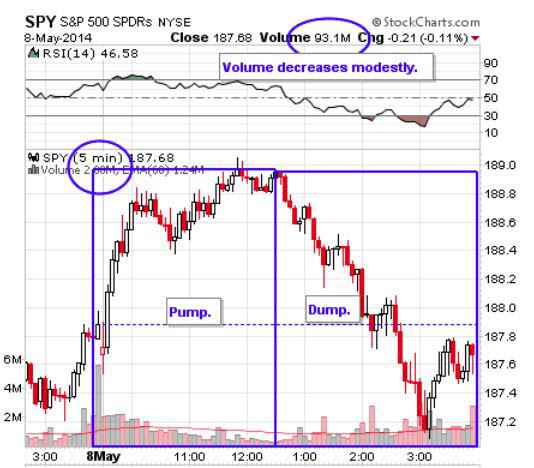Summary
- On March 3, 2009, we advised the bear was ending. It did.
- Today, we are advising that we believe the bull is dying for this cycle.
- Below is our logic -- along with our recommendations to protect your portfolio and possibly enjoy a gain.
5 years and 2 months ago I wrote an article, still available on line, titled "Can You Hear the Bell Signaling a Bottom?" The date was March 3, 2009. I was wrong. The market did not hit bottom until March 6th, 3 days later, after which it took off like a scared rabbit and never looked back.
I claim no special prescience for my timing. I am not a market timer. But I am a serious student of market history. In every issue of our subscriber publication, we publish a chart of the S&P 500 that goes back 144 years. History rhymes - and sometimes history repeats.
As chief investment officer for our firm, the reasons for my decision were many and all involved a comparison to prior market plunges. They included fundamental ratios like price/earnings, price/price/book, price/sales, cyclically-adjusted price/earnings, price/cash flow, etc. They included noting the similarities between the 3 secular bull and bear markets I have seen during 40+ years in the investment business, and the many more cyclical bulls and bears, which to me indicated the likelihood of a selling climax. (The day before, the Dow had just fallen below 7,000 for the first time in 22 years and investor sentiment was at the "I'll never buy stocks again" point).
It was time for those of us who thought AAA-rated stocks selling at 6 times earnings and 6.6% yields looked pretty good if the world didn't end that year. Researching the prior history of the world, I concluded that latter possibility was remote. We have had a remarkable run. When you consider the wall of worry the markets have had to climb over the past 5+ years, it has been a truly wonderful place to be. Until now.
I have no magic bones that tell me when the actual day the market will begin its decline for this cycle will begin. It could yet make the occasional new high. What I do have is a modicum of common sense and the willingness to stare history in the face and listen to what it says. Market history says: When you can buy AAA-rated Royal Dutch Shell A (NYSE:RDSa) at less than 5 times earnings and a more than 8% yield (March 2009) you do it. When the same company sells for 21 times earnings and pays 85% of those earnings to shareholders just to make a 5.3% yield, you don't. (May 2014.) When the typical bull market lasts less than 4 ½ years and this one will soon be pushing 5 ½, it may be time to re-evaluate the value proposition.
When the historic mean cyclically adjusted S&P 500 P/E ratio is 16.5 and it's currently above 25, it may be time to re-evaluate the value proposition. I add to these valuation concerns that corporate revenues are struggling and earnings are only slightly better, thanks to continued cost-cutting that can only last so long. A company can only tighten its belt so far before there is no belt left to tighten and some small child says out loud, "The Emperor has no clothes."
For that matter, corporate earnings aren't nearly as good as Wall Street tries to spin them; beating "estimates" that have been reduced two, three or four times on two, three or four weeks is not the same as actually making money. QE, the basis for much of the cash sloshing around to buy equities, is declining month by month. Once it's gone, it will not be easy to re-initiate. Finally, I draw your attention to the following chart, courtesy of ETF analyst David Fry. It shows the all-too-typical pattern of distribution at market tops, obvious to those of us who observe and respect market history. 
This chart shows one day's trading, in this case May 8th. The market opens strong on good volume, and that's the last time there is big volume for the day. A cynic might think that volume that big could only come from the institutions that today comprise 76% of all market volume.
It shows the classic "distribution" pattern when insiders and institutions run stocks up at the beginning of the day on a burst of volume, then retire to the sidelines as individuals hear "the market is up 125!" and rush to buy so as not to miss anything. For every buyer there is a seller. The hedge funds and Wall Street trading desks supply the stocks to sell into the buying frenzy. As they sell, the market returns to its previous level. Classic distribution, classic sign of a market top.
Our alternative to going to cash for our clients is to purchase securities less tied to "the market;" those with a low Beta to the S&P 500 and the DJI. We are buying mutual funds like the Riverpark Strategic Income Fund (RSIVX,) PIMCO'S Foreign Bond - Dollar Hedged (PFODX) long/short funds like Robeco Boston Partners Long/Short (BPRRX) and Riverpark Gargoyle Hedged Value, which maintains long positions in blue chips but sells options against the market as a hedge. We also like ETFs like the S&P 500 Dynamic Vector (NYSE:VQT), Peritus High-Yield (NYSE:HYLD), PIMCO Dynamic Credit Fund (NYSE:PCI), commodities ETFs such as PowerShares DB Agriculture (ARCA:DBA) and PowerShares DB Commodity Index (ARCA:DBC), and for tax-free income, Market Vectors High-Yield Muni (ARCA:HYD).
I believe a judicious allocation among these categories and issues will protect us while providing better-than-cash income as well as the possibility of capital gains over what looks to be a long, hot summer.
The Fine Print: As Registered Investment Advisors, we believe it is our responsibility to advise that we do not know your personal financial situation, so the information contained in this communiqué represents the opinions of the staff of Stanford Wealth Management, and should not be construed as personalized investment advice.
Past performance is no guarantee of future results, rather an obvious statement but clearly too often unheeded judging by the number of investors who buy the current #1 mutual fund one year only to watch it plummet the following year.
We encourage you to do your own research on issues we discuss to see if they might be of value in your own investing. We take our responsibility to offer intelligent commentary seriously, but it should not be assumed that investing in any securities we are investing in will always be profitable. We do our best to get it right, and we "eat our own cooking," but we could be wrong, hence our full disclosure as to whether we own or are buying the investments we write about.
